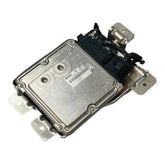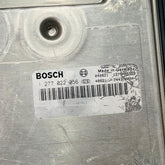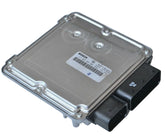The NOx sensor (Nitrogen Oxide Sensor) plays a vital role in modern diesel Mercedes-Benz vehicles, especially those equipped with the Selective Catalytic Reduction (SCR) system. The sensor, like A0009053403 / 5WK96681D, helps control emissions, ensuring your vehicle remains compliant with environmental standards.
However, over time, these sensors can fail, leading to performance issues, engine warning lights, and MOT failures. In this blog, we’ll cover the main causes of failure, signs of a bad NOx sensor, and a step-by-step guide on how to replace it.
What Is the Function of a NOx Sensor?
The NOx sensor measures nitrogen oxide levels in the exhaust gases. This data is sent to the vehicle’s Engine Control Unit (ECU), which uses it to adjust fuel injection and manage the AdBlue system to reduce harmful emissions.
In short, the sensor helps your vehicle run efficiently while keeping pollution in check.
Common Causes of NOx Sensor Failure
Several issues can lead to damage or failure of the A0009053403 / 5WK96681D NOx sensor:
1. Soot and Carbon Buildup
Heavy soot from incomplete combustion can clog the sensor's element, reducing accuracy or causing it to stop working altogether.
2. Water or Salt Corrosion
The sensor is mounted on the exhaust system under the vehicle, making it vulnerable to water, road salt, and moisture, especially in colder climates.
3. Electrical Faults
Faulty wiring, corroded connectors, or ECU communication errors can trigger a sensor malfunction.
4. High Exhaust Temperatures
Excessive heat, often due to DPF issues or turbo failure, can overheat and permanently damage the NOx sensor.
5. Age and Wear
NOx sensors have a limited lifespan. After 100,000–150,000 kilometers, failure becomes more likely even under normal use.
Symptoms of a Failing NOx Sensor
You might be dealing with a faulty NOx sensor if you notice:
-
Check Engine Light (CEL) or Emissions Warning
-
Reduced engine power or limp mode
-
Increased fuel consumption
-
Failed emissions test (MOT)
-
Fault codes like P2200, P2201, P229F, or P229E
How to Replace the A0009053403 / 5WK96681D NOx Sensor
Replacing the NOx sensor is a moderate DIY task if you have some mechanical experience. Otherwise, it is recommended to consult a professional mechanic.
Tools You’ll Need:
-
Jack and jack stands or a car lift
-
Oxygen sensor socket or wrench
-
Anti-seize compound (optional)
-
Diagnostic scanner (OBD-II)
-
Gloves and safety gear
Step-by-Step Replacement Guide:
Step 1: Locate the Sensor
The A0009053403 / 5WK96681D NOx sensor is usually located downstream in the exhaust system, near or after the SCR catalytic converter.
Step 2: Disconnect the Battery
Always disconnect the negative battery terminal before working on electrical components.
Step 3: Raise the Vehicle
Use a jack and secure the vehicle on jack stands to access the underside safely.
Step 4: Unplug the Electrical Connector
Locate the sensor’s wiring harness and carefully unplug it from the connector.
Step 5: Remove the Old Sensor
Use an oxygen sensor socket or open wrench to loosen and remove the sensor from the exhaust pipe.
Step 6: Install the New Sensor
Apply anti-seize to the threads of the new sensor (if not pre-coated), then screw it into place and tighten securely.
Step 7: Reconnect the Connector
Plug the wiring harness back in, ensuring a firm connection.
Step 8: Lower the Vehicle and Reconnect Battery
Safely lower the vehicle and reconnect the negative battery terminal.
Step 9: Clear Fault Codes
Use an OBD-II scanner to clear existing fault codes and confirm the repair.
Pro Tips:
-
Always verify part number A0009053403 / 5WK96681D before ordering.
-
Never overtighten the sensor; it may damage the thread or the sensor tip.
-
Replace the sensor at the first signs of failure to prevent damage to the catalytic system.
Where to Buy a Genuine A0009053403 / 5WK96681D NOx Sensor?
Looking for a reliable source for genuine Mercedes-Benz NOx sensors?
Visit www.automanspareparts.com to shop authentic A0009053403 / 5WK96681D NOx Sensors with competitive prices and worldwide shipping.
Final Thoughts
NOx sensors are a critical part of your diesel Mercedes-Benz’s emission system. Knowing how to spot a bad sensor and replace it can save you time, money, and keep your vehicle running clean. Regular maintenance and timely replacement of the NOx sensor ensure your car stays efficient and compliant with modern emissions standards.







